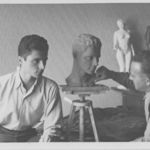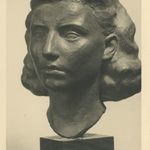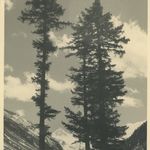The Sculptor and Photographer Borut Hribar / exhibition opening

The Sculptor and Photographer Borut Hribar / exhibition opening
UGM Kabinet, Strossmayerjeva 6
Saturday, 17 June 2023, 19:00
curator: Andreja Borin
During the Museum Summer Night, we will open the exhibition by Borut Hribar, who has been engaged in the Maribor art scene as a sculptor. He was engaged in the Maribor art scene, particularly in the decade following World War II, but he is little known today. With a few exceptions, the artwork on display was donated to the Maribor Art Gallery by the artist's daughter, Ms Martina Šubic. The current exhibition is also the first opportunity to introduce the artist in a more comprehensive way.
Borut Hribar (1907–1983) was born in Ljubljana. He was a self-taught sculptor who also engaged in arts and crafts, ceramics, and photography. His first art training came from sculptor France Ravnikar (1886–1948), a professional drawing teacher at the Maribor grammar school. Following World War II, he attended art courses with painters Maks Kavčič (1909–1973) and Jože Žagar (1884–1957). He was already present in Maribor's artistic life before World War II: he displayed ceramics in 1938, received a monetary prize for a stylised coat of arms of the Kingdom of Yugoslavia the same year, and exhibited with the Brazda Artists' Club in 1939. He worked as an industrial plant manager at Mariborska tiskarna printing house. He joined the Association of Slovenian Figurative Artists in 1946 and exhibited regularly with them until 1955. He assisted sculptor Zdenko Kalin with his work on the victims' memorial in Urh near Ljubljana (1948–1951). Since 1925 he was also a member of the Slovenian Mountaineering Society and an active mountaineer. His numerous photographic motifs include images of Pohorje and the Pohorje mountain lodges. His photography is largely reportage, but there are some artistic-expressive attempts as well. He sculpted in wood, clay, and even marble, demonstrating remarkable aptitude. The surviving sculptural material is dominated by portraits, female nudes, and masks. He admired the work of the Croatian sculptor Ivan Meštrović (1883–1962) at first, but his postwar works are more in line with socialist realism. After 1955, he abandoned sculpture and focused on the production of decorative wood and ceramic items.



